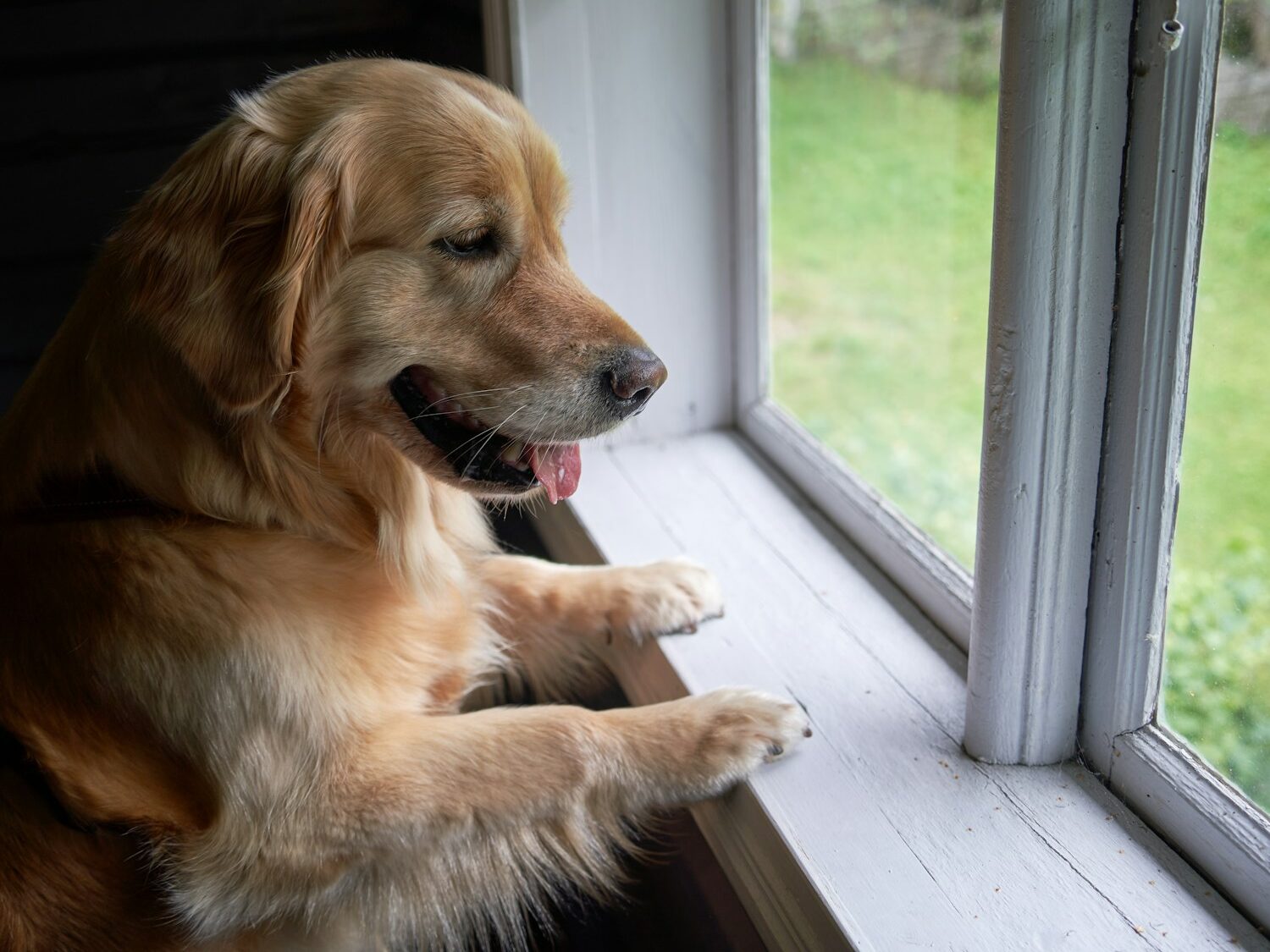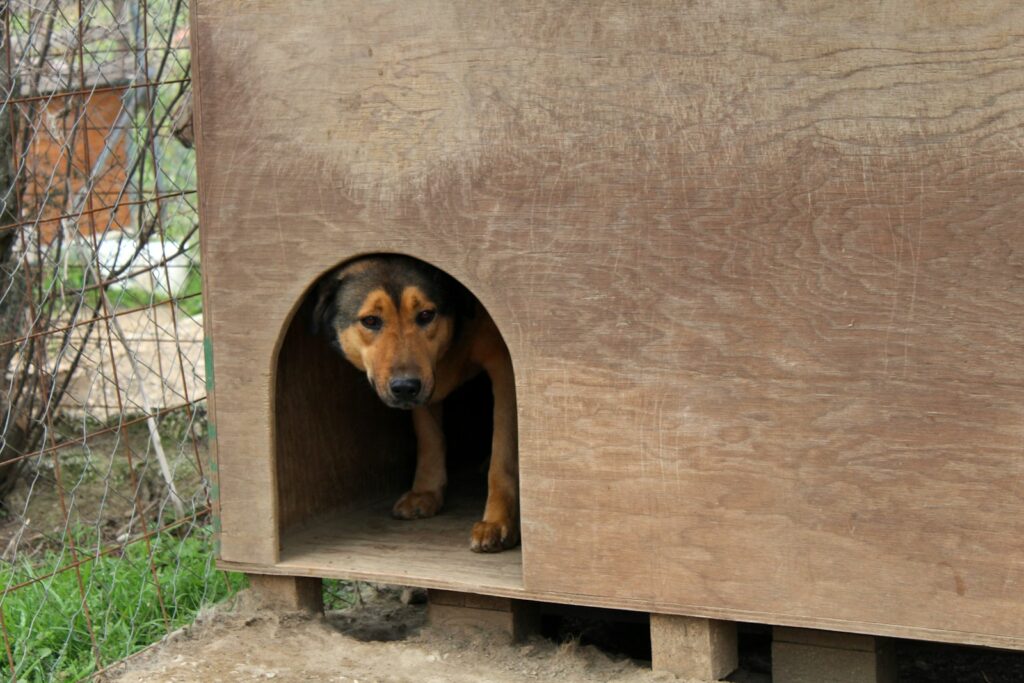15 Signs Your Dog Is Lonely

Dogs are social creatures. When their social need isn’t met, they’ll often express it in subtle or surprising ways. The trouble is that we often mistake loneliness for misbehavior or moodiness. If you’ve been wondering whether your dog is feeling more than just bored, these are the signs that their loneliness might be starting to take a toll.
They Sleep More Than Usual

While dogs love a good nap, excessive sleeping, especially during hours when they’re normally alert, can indicate emotional withdrawal. A lonely dog may sleep to pass the time or as a way to cope with having no stimulation. You might think they’re just low-energy or getting older, but if this shift is recent and paired with disengagement, it’s a sign they’re emotionally checked out.
They Become Destructive

Chewing shoes, scratching doors, or tearing up furniture can all be signs that your dog is struggling with too much alone time. Dogs crave interaction and mental engagement. When they feel neglected, they’ll often channel that frustration into destruction. Not to be naughty, but because it’s the only outlet they have. It’s a cry for help, not a tantrum.
They Often Whine or Bark

Frequent whining or barking, especially when you leave the room or house, can be a major sign of separation distress. Dogs vocalize to communicate, and when they feel anxious or abandoned, their voice becomes the only tool they have to call you back. If this behavior ramps up after time alone, it’s not stubbornness—it’s a plea for connection.
They Follow You Constantly

It’s sweet when your dog follows you from room to room, but when it’s relentless and seems anxious, it could signal emotional insecurity. They may be so afraid of being alone again that they feel the need to keep you in sight at all times. It’s not just clinginess—it’s a symptom of feeling emotionally disconnected or forgotten when you’re not present.
They Lose Interest in Their Favorite Toys

Dogs usually light up at the sight of their favorite ball or chew toy. But when loneliness sets in, even the most beloved toys lose their appeal. That’s because these items are often meant to supplement interaction, not replace it. A dog who no longer plays—even with favorites—may be withdrawing, much like a human would in isolation or depression.
They Eat Less (or More)

Just like people, some dogs react to emotional stress by losing their appetite, while others may overeat out of boredom. A sudden change in eating habits, especially if it happens when they’re spending more time alone, can indicate that something is wrong emotionally, not physically. A lonely dog may eat with less enthusiasm or seek food as comfort in your absence.
They Pace or Wander Often

A dog that wanders from room to room, lingers at windows, or circles the house may be searching for someone, or something, to do. This behavior often ramps up during times of emotional stress or when the home feels too quiet. Pacing is a way for your dog to burn anxious energy and simulate “doing something” in the absence of real companionship.
They Destroy Things When You’re Not Home

If your otherwise well-mannered dog turns into a tornado when you leave, they’re likely expressing emotional distress. This type of destruction often targets doors, windows, shoes, or things that smell like you. It’s less about rebellion and more about coping—they’re acting out their anxiety and loneliness in the most physical way they know how.
They Become More Vocal When You Return

A dog that greets you with whines, howls, or frantic barking may be doing more than celebrating your return. This intensity can indicate they’ve been stressed in your absence. They’re not just happy—you’re their lifeline. If this becomes a daily dramatic event, it could mean your dog is struggling to regulate emotions without you around.
They Seem Anxious Even at Home

A dog who paces, pants, or constantly checks on you may not feel emotionally safe. If they’re never settled unless they’re glued to your side, it might be because they associate calmness only with your presence. This is often a sign of loneliness and fear that you’ll leave again, not just an energetic temperament.
They Try to Escape the Yard or House

Repeated escape attempts often signal that your dog is seeking more than just an adventure—they’re looking for stimulation or connection. Dogs left alone too often may try to break free to explore, find other people or animals, or simply escape the emotional monotony of being by themselves. It’s a desperate attempt to reconnect with the outside world.
They Over-Groom or Lick Themselves Constantly

Excessive grooming or licking, especially to the point of creating sores, can be a self-soothing behavior. Dogs often do this when they feel anxious, neglected, or stressed. It becomes a compulsive action to cope with loneliness and a lack of stimulation. If your dog is suddenly focused on one paw, leg, or flank, it may be more emotional than physical.
They Start Acting Out During the Night

Nighttime is usually when dogs wind down. But if your dog barks, paces, or whines late at night, they may be trying to make up for lost attention. This behavior is often overlooked or misread as restlessness, but it may be your dog’s way of saying they feel ignored during the day and are now desperate for connection.
They Become More Reactive to Noises

A lonely or anxious dog becomes more alert—sometimes overly so. Barking at passing cars, creaks in the house, or minor disruptions may not just be instinct—it could be heightened sensitivity due to emotional stress. In the absence of social interaction, your dog might be turning hyper-alertness into a full-time job as a way to feel needed or occupied.
Their Tail Stops Wagging

The tail tells you more than you think. A dog who stops wagging becomes low-energy or shows no interest in interaction may be emotionally flat. If the sparkle is gone and your normally expressive dog now moves with hesitation or detachment, it could mean they’re not physically ill—just feeling lonely, unseen, or disconnected.





